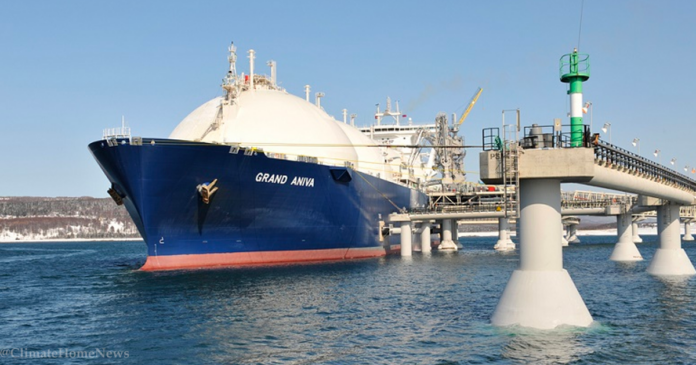Canada’s window of opportunity to supply Europe with liquified natural gas (LNG) is quickly closing, warns one expert as the continent reports record levels of imports.
European LNG imports skyrocketed by 63% last year as the continent moved to alleviate its dependence on Russian energy and Canada is missing out big time.
According to the International Energy Agency (IEA), in 2022, the global LNG market doubled, reaching $450 billion – in part driven by Europe’s scramble to find alternative sources of LNG.
The big winner has been the United States which accounted for two-thirds of the growth in imports, supplying Europe with 43 billion cubic metres of LNG.
Other countries cashing in include Qatar, Egypt, Norway, Angola and Trinidad and Tobago. Meanwhile, Russian imports declined to 2 billion cubic metres.
Senior Fellow and Director of Natural Resources, Energy and Environment at the Macdonald Laurier Institute, Heather Exner-Pirot told True North that Europe needs energy and it needs it now.
“The political environment is a deterrent. There is no confidence from the investment community that projects in Canada could be approved, or if approved could be developed in a timely manner,” said Exner-Pirot.
“Europe needs gas now, and Canada is demonstrably slow in developing these kinds of major projects, with regulatory hurdles and social acceptance being major hurdles. Also with high interest rates capital is very expensive right now, and long development times add a lot of cost. There is a window of opportunity and it is being closed.”
So far Prime Minister Justin Trudeau has quashed any hopes that Canada could become a major LNG supplier across the Atlantic.
During a diplomatic visit to Canada by German Chancellor Olaf Scholz in December, Trudeau told the media that there lacked a “worthwhile business case” to export gas to our European allies.
“There are a number of potential projects, including one in Saint John, and some others that are on the books for which there has never been a strong business case because of the distance from the gas fields,” said Trudeau.
“We are looking right now — and companies are looking — at whether or not, in the new context, it makes it a worthwhile business case, to make those investments. … It needs to make sense for Germany to be receiving LNG directly from the east coast.”
According to Exner-Pirot, analysis shows that European LNG requirements could double by 2030 and global LNG demand could reach 7000 million tonnes by 2040.
“A generous interpretation would say that there were no long term contracts on the table – Germany was trying to insist on a 15 year contract which meant most traditional contracts have too high an investment risk,” Exner-Pirot told True North.
“But other countries have signed LNG deals with Germany since that visit, notably the United States and Qatar. A bigger problem was the lack of government support for east coast LNG projects. Energie Saguenay, for example, was rejected in February 2022. This makes it very difficult to attract investors for future projects.”
About a month later, Germany signed a multi-year LNG deal with Qatar which will see two million tonnes of liquid gas shipped up the Red Sea and through the Suez Canal beginning in 2026.
Canada should shift its focus to develop our Western LNG potential as “fast as possible” suggests Exner-Pirot.
“That likely won’t go to Europe, but it will add meaningfully to global supply and take some of the pressure off Europe and Asia having to compete with each other for deliveries,” she said.
Projects such as Ensure CGL, LNG Canada, Cedar LNG and Woodfibre show promise.
LNG is pouring into Europe at such a rate that the IEA reports that by the end of the year, “more than 30 tankers full of LNG” were on standby to “hook up to gasification facilities in Europe rather than sell their cargo cheaper elsewhere.”
In total, global gas tanker orders have spiked 130% when compared to 2021.
These trends have left some observers dismayed at Canada’s unwillingness and inability to develop its own resource potential.

